Submitted by Berrin Chatzi Chousein
"Emotionally driven and storytelling images" draw more attention, say visualization artists
United Kingdom Architecture News - Jan 09, 2024 - 09:46 5555 views

"Emotionally driven, atmospheric and storytelling images" draw more attention in architectural visualizations, say visualization artists.
Stating that the emotional dimension and mere perception are more prominent in architectural visualization, the visualization artists emphasize that architectural visualization has now gone beyond the expression of "rendering" and is a comprehensive communication service that includes different multi-partite layers.
Continuing our new series on 3D rendering and architectural visualization, we profile 7 prolific architectural visualization firms that enhance architectural communication to a different level.
The series, called WAC Innovative Minds: Architectural Visualization, will give an in-depth focus to the creative processes and innovative works of visualization artists and understand multiple aspects of architectural visualization, the creative spirit and the future of architectural visualization.
The series forms the second part of WAC Innovative Minds: Communication In Architecture series.
WAC Innovative Minds: Architectural Visualization series aims to reveal meaningful and provocative insights from the biggest names in the 3D rendering and architectural visualization industry.
Our second series feature exclusive interviews from 7 world-renowned architectural visualization companies, including Hungary-based visualization agency Brick Visual, Italian visualization company Engram, Chinese visualization studio InPlace Visual, Norwegian design and illustration studio Kvant-1, London-based visualization studio Minmud, Amsterdam-based visualization studio Proloog BV, and Polish architectural visualization company Vivid Vision.
As part of our interview series, we posed four main questions to the industry's leading figures: What is the impact of 3D rendering and visualization on projects for clients? What is real-time rendering? And why do nearly half of architects use real-time rendering? As a creative visualization expert, what makes your visuals different from others? And what do you pay attention to most in your visualizations? In the rise of AI, how will the use of AI impact 3D rendering and visualization? In an age where visualization is no longer a typical technology tool and pushes the limits of creativity, do you think visualization experts will replace architects in the future?.
Read on for the edited version of the interview transcript of the 7 architectural visualization artists having different stylistic approaches in Architectural Visualization:
András Káldos, CEO of Brick Visual. Image © Brick Visual
“Our role is crucial in presenting and selling architects' vision”
András Káldos, Brick Visual
Founder and CEO of Hungary-based visualization agency Brick Visual András Káldos believes that the impacts of 3D rendering and visualizations on clients can be evaluated in two aspects: from architects' perspectives and developers' perspectives.
According to Káldos, while for architects, visualization is mostly based on presenting and selling their designs and visions, for developers it can turn into a different set of marketing solutions.
Káldos said that "we try to avoid the terms "render" or "rendering" in our field, as they suggest a narrow focus on technical aspects. Our role goes beyond mere technical work; we provide design communication services, adding substantial value to our projects," adding that "architects and developers have distinct needs".
"For architects, our role is crucial in presenting and selling their vision and architectural program during competitions. Through our work and design communication service, we push forward the design process as well and help them save valuable resources such as time and money," Káldos told World Architecture Community.
"On the other hand, when working with developers, our focus is on creating diverse promotional materials tailored to the end-user and the marketing goals of our client," he added.
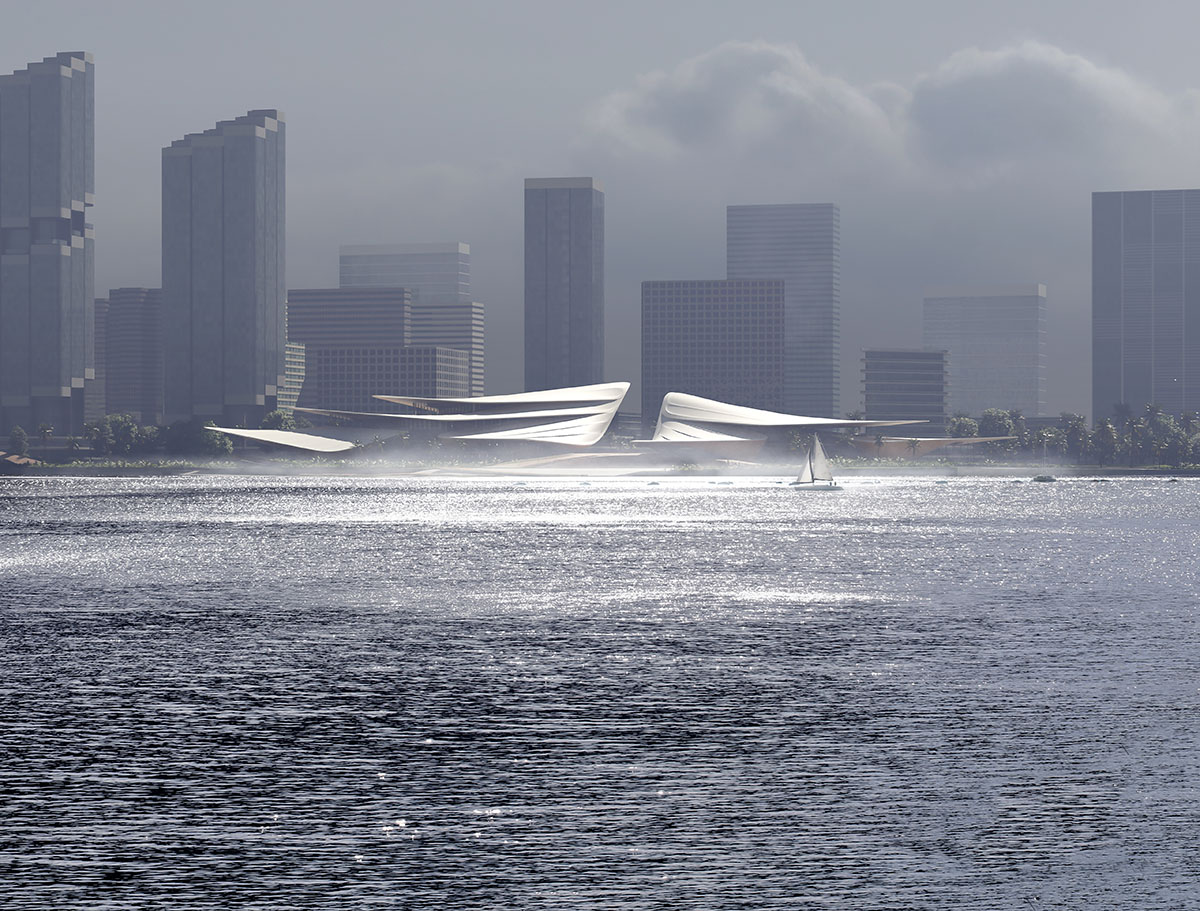
Sanya Cultural District by Zaha Hadid Architects. Image © Brick Visual
Real-rime rendering
Touching upon the role of real-time rendering, Káldos drew attention to archviz experts who are creating a rendering software and focusing more on real-time solutions from the gaming industry.
"Thanks to technological advancements, archviz experts now integrate real-time solutions from the gaming industry alongside traditional pre-rendered workflows. Working with pre-rendered content has become significantly faster, almost reaching the speed of real-time technologies like Chaos Vantage, he explained.
"Real-time and interactive engines offer a crucial advantage: the ability to visualize work immediately. These engines also enable the generation of diverse outputs, including images, films, VR, or other interactive content."
According to Káldos, "this proves advantageous for architects seeking to observe the progression of their designs, and for us, as we are required to produce a large volume of visuals in various formats."
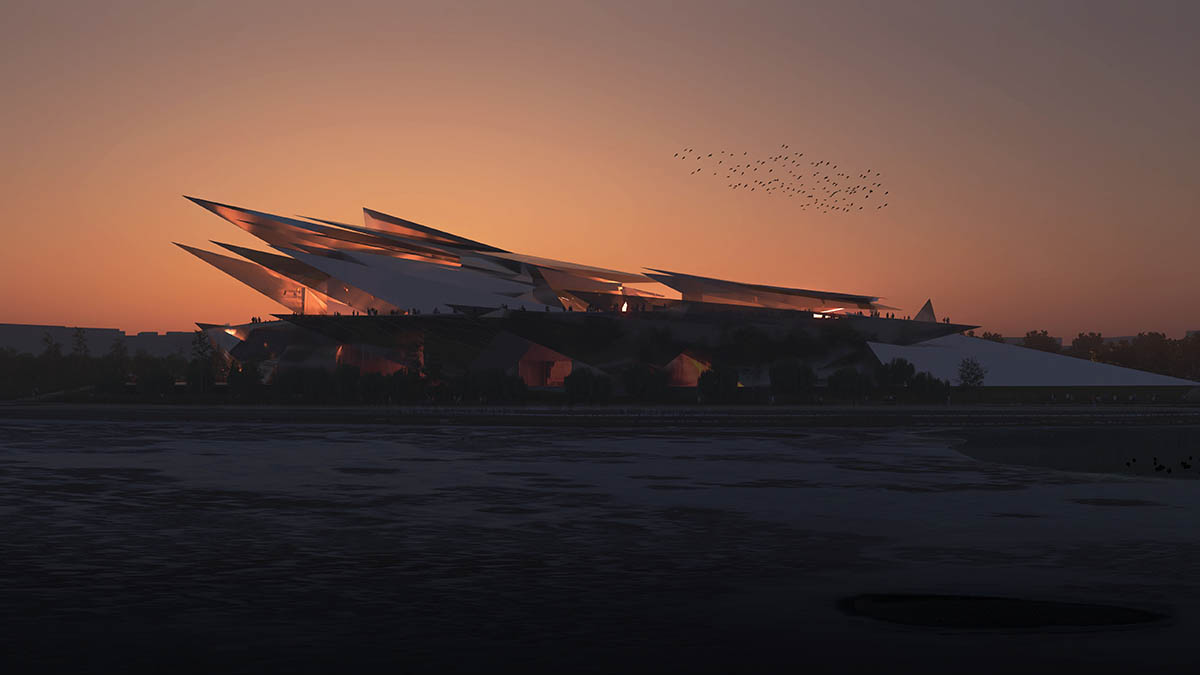
Kamal Theatre by Kengo Kuma & Associates. Image © Brick Visual
"Our primary goal is to help clients articulate their visions"
When asked what distinguishes Brick Visuals' visualizations from other companies, Káldos stated that "we aim to distinguish ourselves from the competition through the excellence of our services and the quality of our visuals."
"Our primary goal is to help clients articulate their visions through customized design communication solutions, leveraging the latest technological advancements," he added.
"We assist architects by offering multiple drafts to refine their concepts"
Kaldos emphasized that Brick Visuals' architectural visualizations also offer different perspectives to its clients, which can help to speed up the decision-making process.
"Through our unique workflow, we present clients with an alternative perspective on their designs, facilitating decision-making. We assist architects by offering multiple drafts to refine their concepts."
"Drawing inspiration from various creative industries and art forms, we create visually distinctive and high-quality representations. Furthermore, we place significant emphasis on storytelling, ensuring that our visuals resonate effectively with the audience," Káldos continued.
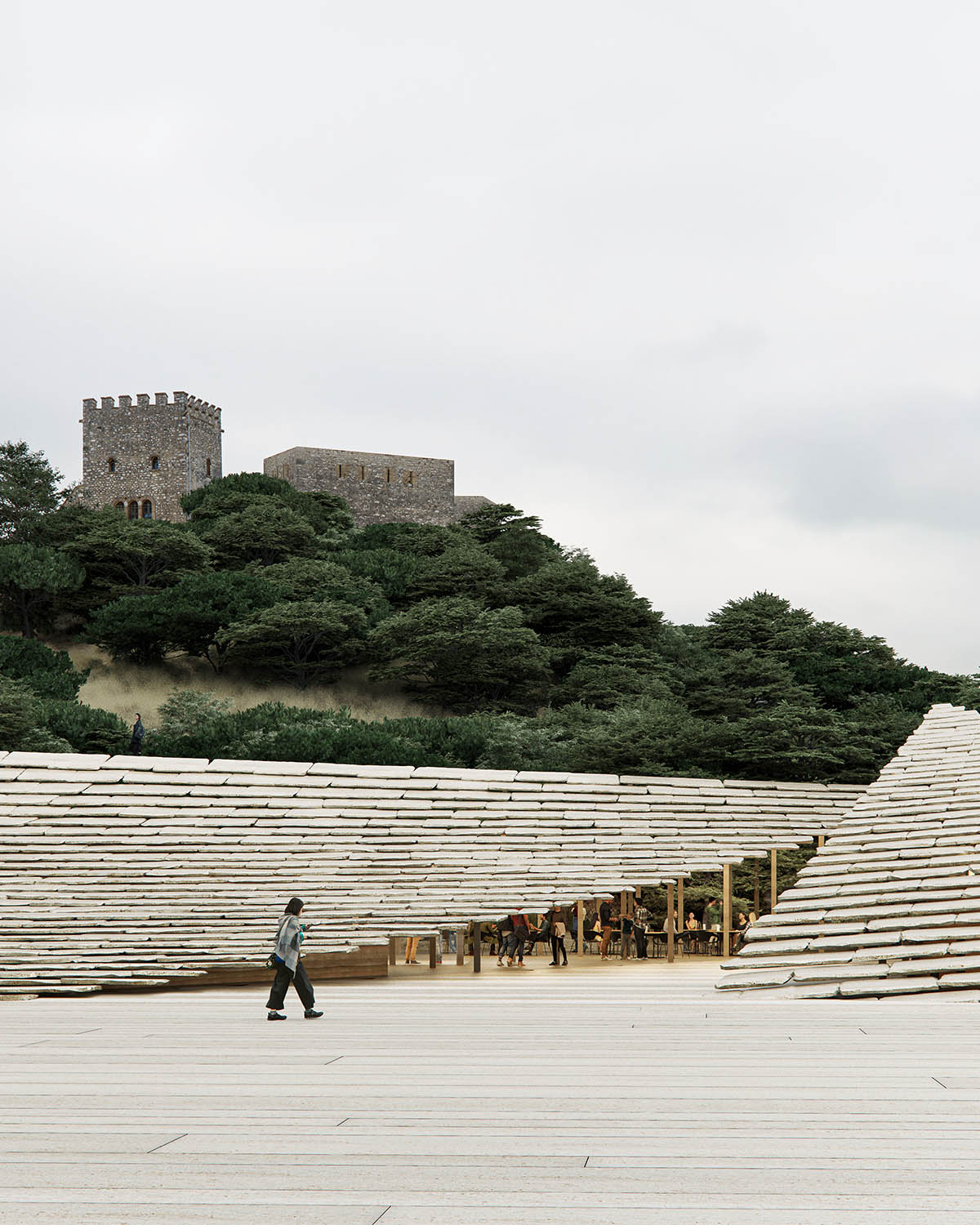
Butrint National Park by Kengo Kuma & Associates. Image © Brick Visual
"AI will have a great impact on the industry"
According to Káldos, AI will have a great impact on the industry and we should not be afraid of the consequences it will create. He said that his company's research and development team already "experiments a lot on ways they can reap its benefits."
"As archviz is highly technology-dependent, AI will have a great impact on the industry. At Brick, we are optimistic about the future. We don’t fear it or deny it like some do," Káldos said.
"A successful initiative that came out of it is the Pulze software family. They have recently rolled out Project Dream, an AI-assisted tool that can enhance creative processes by finding the perfect mood, composition, and color palette."
"Also, we have integrated AI into the production workflow of animation projects such as render-frame interpolation," he added.
"Visualization experts won’t replace architects"
Káldos thinks that visualization artists will not replace architects in the future, but that there will be a lot of progress in virtual architecture - especially in metaverse.
"In the last couple of years, archviz has become increasingly important," he told WAC. "The end users crave content, in particular, the demand for high-end archviz has skyrocketed."
"Considering built architecture, visualization experts won’t replace architects. However, archviz professionals are more skilled in virtual architecture and producing content for the metaverse," he concluded.
Brick Visual was founded by András Káldos in 2012 in Hungary. Working with the business mindset, the firm has a distinctive and artistic approach by using cutting-edge technology in their works.

Paolo Zambrini, founder of Engram. Image © Paolo Zambrini
"We selectively produce iconic images aimed at an emotional outcome"
Paolo Zambrini, Engram
Italian architectural visualization firm Engram founder Paolo Zambrini argues that architectural visualization "is not an option anymore", digital representation requires for both architects and other clients.
"Visualization happens in different phases and it has a different role depending on the type of market and client. In general we can say digital representation is crucial for both project making both for decision-making and presentation and it's not an option anymore," Zambrini told WAC.
"Digital images are part of any presentation, but nowadays modeling and fast visualization are an inner part of the design process itself since most projects are done in 3D environments today, being them BIM or not," he explained.
Regarding the role of real-time rendering, according to Zambrini, real-time rendering "allows checking project from any angle even without the need of full-bown images, and it's a formidable tool to study project while it's being developed."
"Tools have become really versatile today, and we can choose the proper trade-off between quality and speed depending on the scope of the visualization," he emphasized.
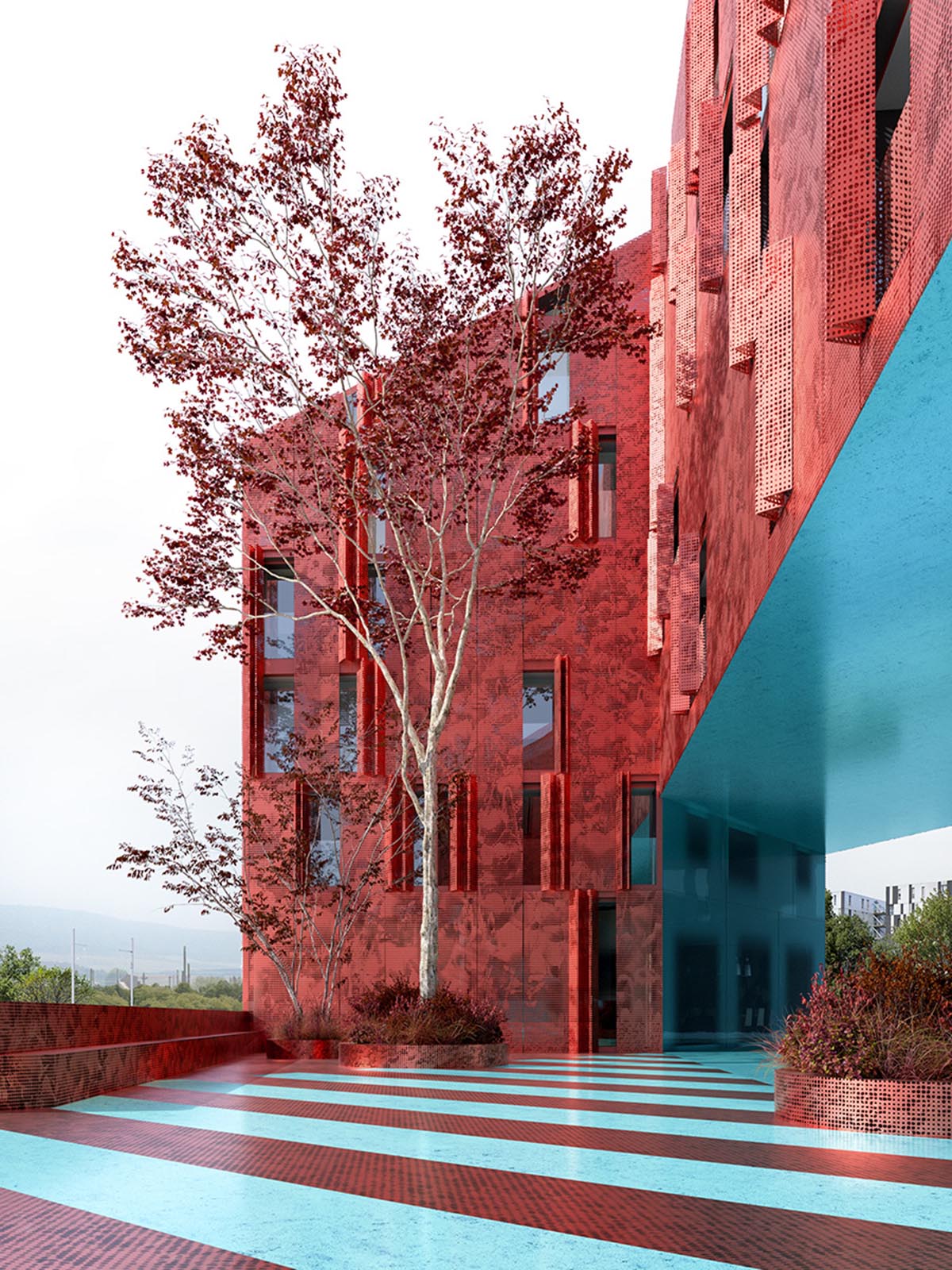
MVRDV's project. Image © Engram
"Our images work as an interconnected whole rather than the sum of their parts"
The most important feature that distinguishes Engram from other companies lies in focusing on the emotional side of architecture. The company interprets projects with "simple and strong compositions" rather than focusing on the project itself and its functions.
"Engram selectively produces iconic images aimed at an emotional outcome. We strive to interpret the essence of the project through simple and powerful compositions rather than describing the project and its functions," said Paolo Zambrini.
"Our images are the synthesis of the underlying idea of the project expressed in the simplest, most striking, and minimal way possible."
He added that "over the decades, we have developed a highly personal language based on a principle of abstraction, which is rooted in 20th-century art. Our images work as an interconnected whole rather than the sum of their parts."
"Our efforts are focused on enhancing the first impression of the images we create"
Touching on the sub-codes of architectural visualization, Zambrini said that "most of our efforts are focused on enhancing the first impression of the images we create."
"We call it “first reading”, it's the initial impression of an image and it is the moment in which viewer is captured (or not)," he added.
"It concerns our primitive eye and is a pure emotional perception without understanding: the relationships between shapes and colors hit the brain first."
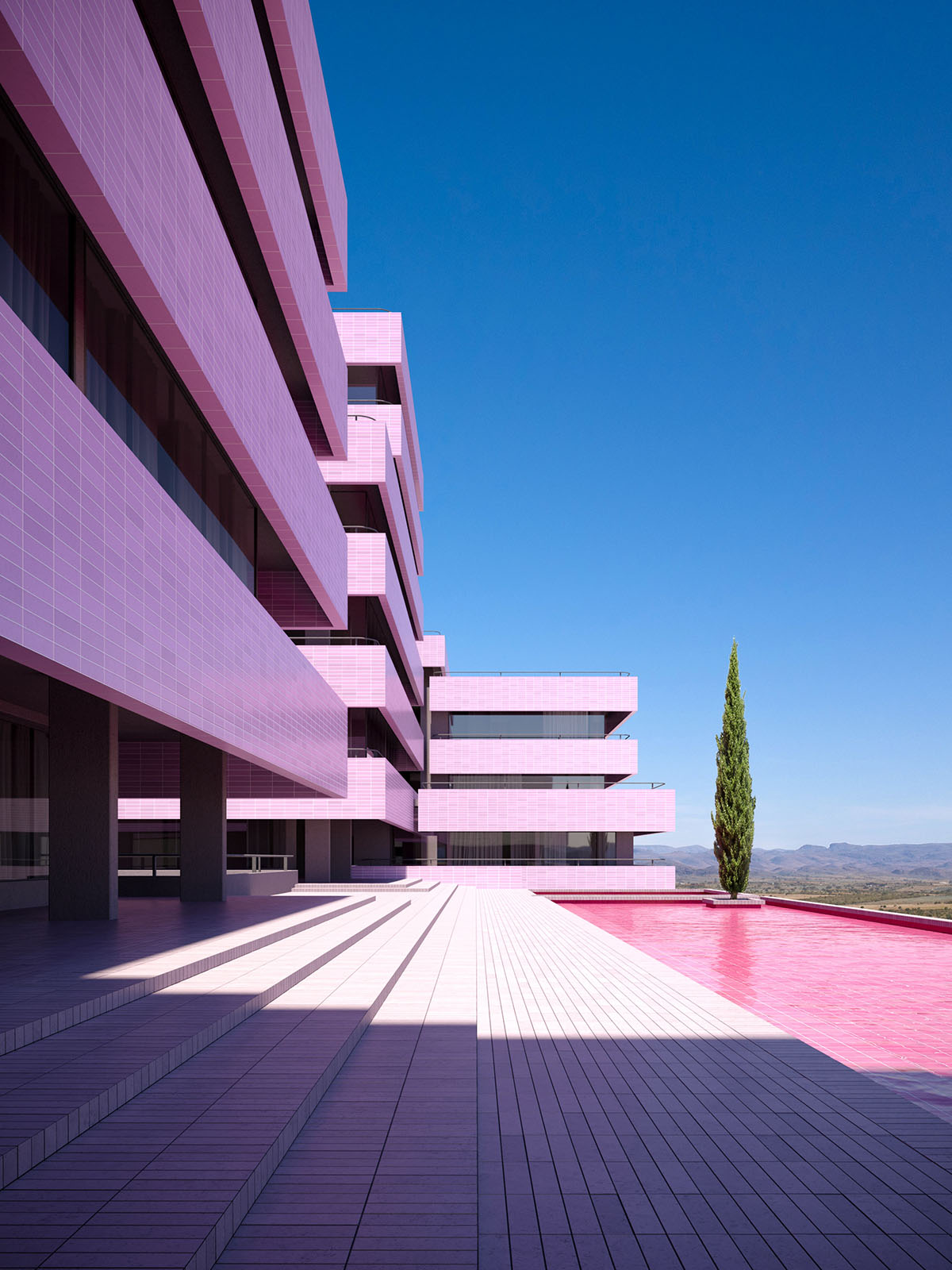
Ricardo Bofill Taller de Arquitectura (RBTA)'s housing project in Georgia. Image © Engram
"We are inspired by Mark Rothko"
In architectural visualization, Engram takes cues from Latvian-born American abstract painter Mark Rothko. The principle of abstraction, balancing colors and shapes in his paintings, is effective in creating what Engram calls "the purest form of architectural illustration."
"Quite often an effective first reading is all we need to create a perfect picture. In our vision, details and storytelling are not that important and must come second to emotional perception. One of our favorite references is Mark Rothko," said Paolo Zambrini.
"His work has a root in architecture. Using a principle of abstraction and just balancing colors and shapes, his paintings are what we can consider the purest form of architectural illustration ever."
"In short, we try to shift away from the pure simulation of photography which is trending nowadays, trying to explore the realm in-between photorealism and painterly," he added.

Mario Cucinella's bridge project in Sardinia. Image © Engram
According to Zambrini, although he argues that artificial intelligence (AI) will make a significant paradigm shift in history, it is difficult to understand exactly what impact it will have on architectural visualization in the future.
However, he also underlines that AI has potential risks, even if it is a new tool.
"AI is probably the most important paradigm shift in the history, hard to tell what will happen," said Zambrini.
"In the short term, AI will be for sure - and it's already – a new tool, which helps in improving our images and exploring new concepts in a faster way."
"Despite the risks involved in such a huge change, anyway, I see a deep beauty in the cathartic potential it may bring," he added.
"Today we can talk about virtual architecture - in the context of the metaverse"
He gives the following answer to the question of whether visualization artists will replace architects in the future: "Certainly not. Architecture is an extremely complex discipline that goes far beyond mere formal conception," said Paolo Zambrini.
"Creating architecture involves not only ideation but also a deep understanding of engineering, space, materials and much more. The act of constructing architecture itself extends well beyond the knowledge of any visual artist," he added.
"However, we can assert that today we can talk also of "virtual architecture" - for instance, in the context of the metaverse."
"This dimension is free from many of the implications mentioned above and can be more easily handled by visualization experts. In any case, producing even virtual architecture requires an understanding of space management, which is not necessarily a skill exclusive to digital artists," Zambrini concluded.
Founded in 1990s by Paolo Zambrini, Engram is a team of architects and artists based in Italy. The firm is influenced by a deep passion for architecture and 20th-century abstract art movements, resulting in compelling images that communicate the essence of each project in a simple yet powerful manner.

Xu Cheng, Partner & Art Director at InPlace Visual. Image © Xu Cheng
"AI does not have unique mindset and sophisticated thinking like humans"
Xu Cheng, InPlace Visual
InPlace Visual Partner and Art Director Xu Cheng believes that 3D rendering and visualization has become an integral part of the architectural design and marketing process today.
According to Cheng, architectural visualization "can fully showcase in detail the architect’s vision and simplifies the communication between architects, developers, investors and buyers before the project is built."
"Such services provide a cost-effective, collaborative way to validate the concept, details, and feasibility and even have quick feedback from all stakeholders," Cheng told WAC.
Claiming that real-time rendering provides "strong interaction, fast previews, and strong flexibility," Cheng underlines that it helps architects and developers to improve and showcase their designs from various angles.
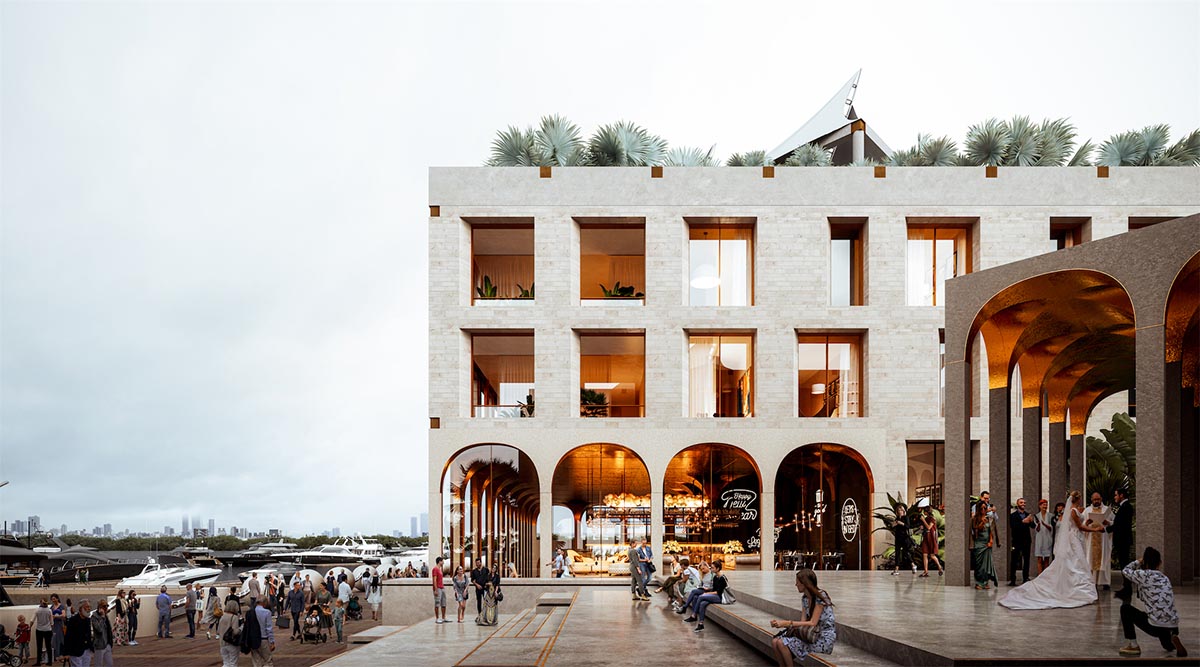
Marina Mirage designed by Fraser & Partners. Image © InPlace Visual
Real-time rendering also "reduces back-and-forth communication costs"
"Real-time rendering is to create images and get rendering previews in real time, mainly using the GPU for rendering. A few big advantages of real-time rendering: strong interactivity, fast rendering previews, strong flexibility. So it is adopted by many architects and visualizers," he explained.
Moreover, architects and developers can "get basic preview results, so to reduce back-and-forth communication costs with rendering companies and to improve efficiency," according to the artist.
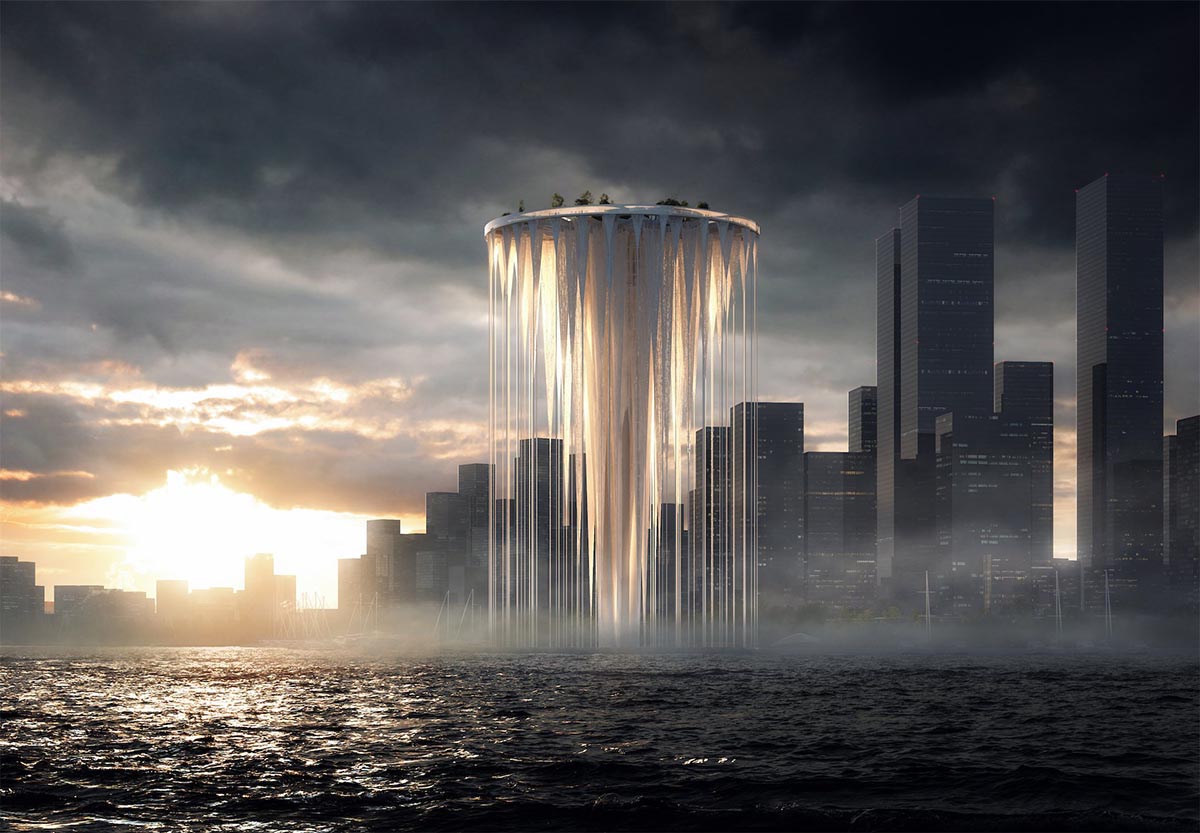
Shenzhen QIanhai New City Landmark designed by Sou Fujimoto Architects. Image © InPlace Visual
What makes different InPlace Visual from other companies is "to have a deep understanding of the architect's design philosophy," as Cheng emphasized, adding that his firm "thinks in multiple dimensions, and create with a professional perspective and an expression that fits the features of the design."
"What we pay most attention to is the unique design language of the proposal itself, and the experience and feelings it can provide to the audience," he said.
"During the creation process, we will also listen to the architects’ unique ideas and do our internal research and give our professional opinions. We not only strive to clearly express the project design intentions, but also hope to impress the audience."
"In our industry, AI is of a great help in sorting out creative directions. It makes testing preliminary ideas in a short period of time possible," he added.
However, Cheng believes that "AI does not have unique mindset and sophisticated thinking like humans, and it’s hard to output unique styles and ideas that touch hearts." "For now it’s still very difficult to achieve the precision of established, professional visualization software. However, it’s excellent tools to optimize the creative workflow and to improve efficiency and quality," he explained.
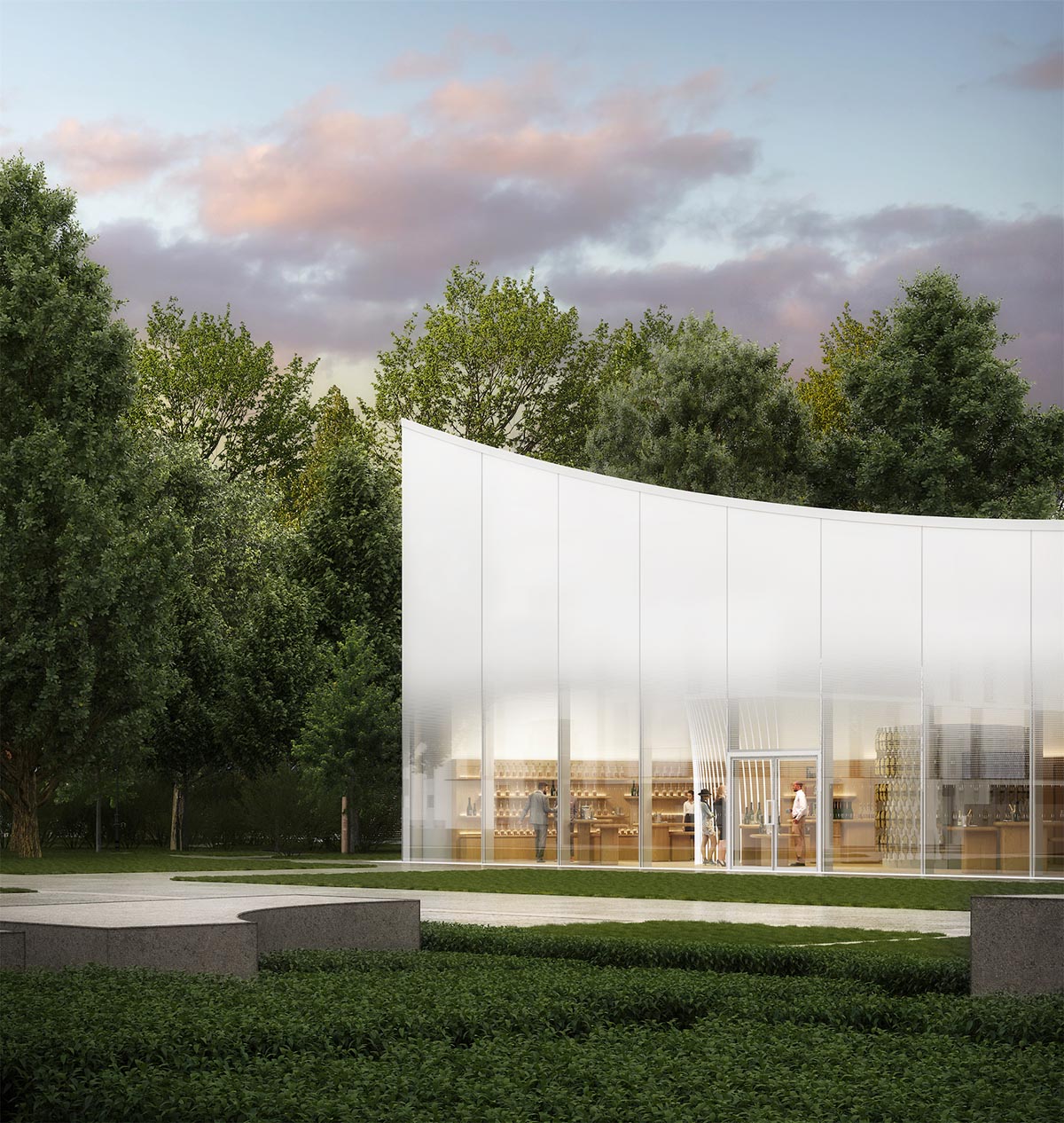
Nicolas Ruinart Pavilion designed by Sou Fujimoto Atelier Paris. Image © InPlace Visual
"I don’t think visualizers will replace architects”
Cheng doesn't think visualization experts will replace architects in the future, but he does believe the field will gradually expand its capabilities.
"I don’t think visualizers will replace architects," he told WAC. "However, creativity in various professional fields requires a lot of enthusiasm, continuous learning and practice."
"In addition, the role of the architects in the building process is crucial to the completion and quality of the project," he added.
"There is an old saying in China that each profession has its own special fields to master, so I think both visualization experts and architects have their own pursuits and goals in their own fields," he concluded.
Founded in 2018, Beijing-based company Inplace Visual focuses on rendering and animation. The firm is working with a team of over 50 members consisting of visualizers, modeling specialists, project managers and business specialists. The firm works exclusively on visually communicating the next possible world.
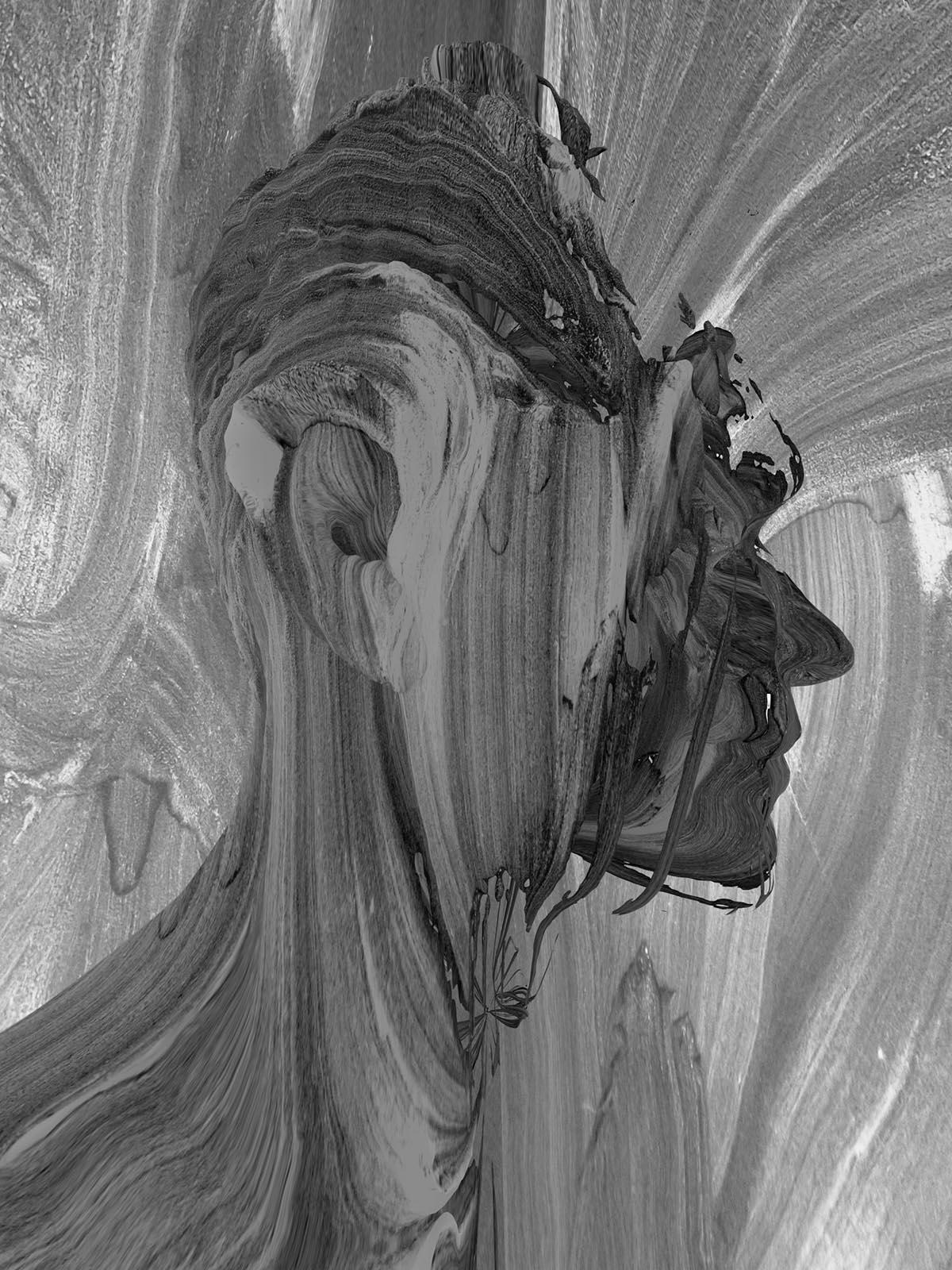
Vegard Aarseth, co-founder of Kvant-1. Image courtesy of Kvant-1
"The spaces become easily understandable, even for people not in the building industry"
Vegard Aarseth, Kvant-1
Kvant-1 co-founder Vegard Aarseth agreed with others, saying that the role and impact of 3D rendering and visualization on projects for clients is huge because "clients get to see what their projects look like in a way that is more understandable for somebody not in the building industry."
Aarseth added that "they get to see how it fits into the surrounding environment, how it catches the light, the materiality, all before any building has begun. The client thus gets more control over the project."
Aarseth considers real-time rendering as an interactive scene that can be explored in real time, like computer games, and points out that spaces can be better understood with real-time rendering.
He said that "real time rendering is where the scene becomes like a computer game, you can walk around and explore. In the case of architecture, you can walk around virtually in a building. The spaces become easily understandable, even for people not in the building industry."
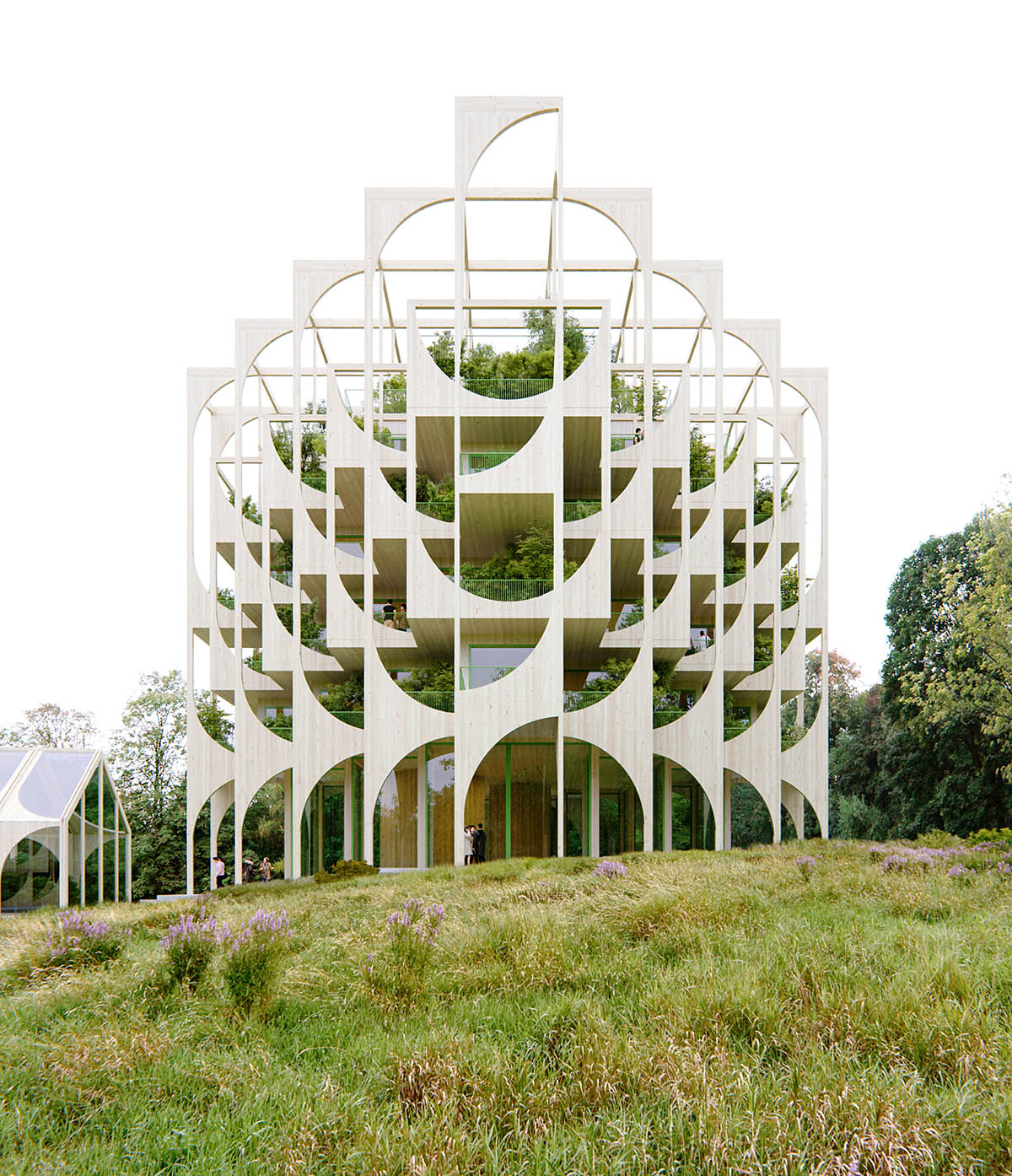
Kaleidoscope, Nordic Project - Ulsteinvik. Image © Kvant-1
"Again it gives the client more control of how the final build project will look. With larger more complex projects it is particularly effective at easily giving one an idea of how spaces will be experienced," he added.
"If you combine real-time rendering with VR you can also get a great sense of scale from a human perspective, which can be difficult to imagine looking at a plan drawing or still image," Aarseth explained.
"We also take great pride in our craft"
According to the artist, what distinguishes Kvant-1 from other companies is "the unique qualities that make their image stand out," adding that at the same time, their use of craft in their visualizations differentiates their work.
"AI removes a lot of the technical barriers"
Vegard Aarseth, agreed with Xu Cheng, Paolo Zambrini, András Káldos, explaining that "AI certainly will be a part of an artist toolset and will speed up the process", even if "it is already a catalyst in conceptually thinking".
The artist thinks that AI will "remove a lot of the technical barriers from this part of the process." However, according to Aarseth, "there is a lot of speculation, but even the AI experts say (publicly at least) that they have no idea how far the technology will develop."
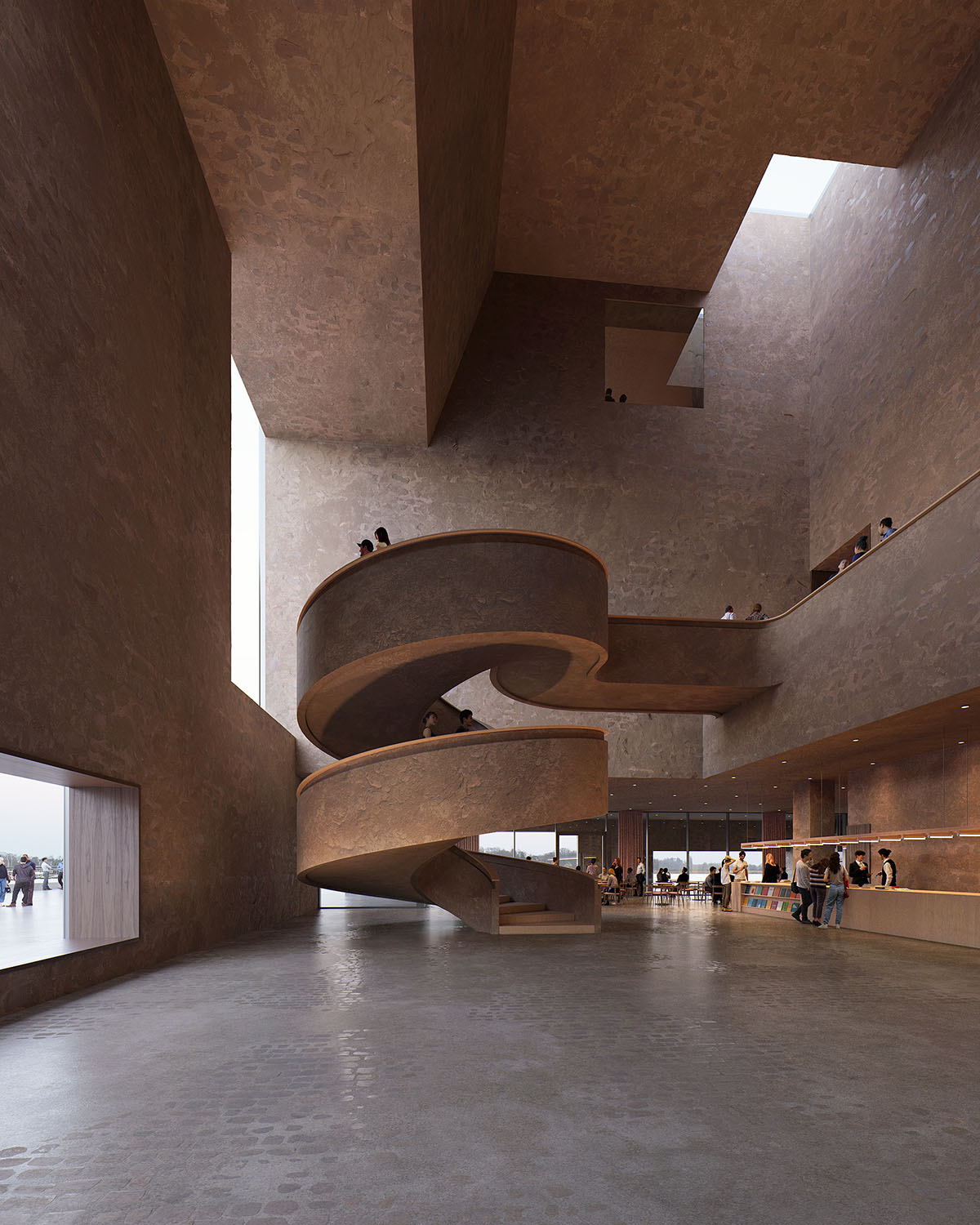
Lundgaard&Tranberg, Project - Rostock. Image © Kvant-1
Speaking about the future of architectural visualization, Aarseth argues that visualization experts will not replace architects, but underlines that they already act together in certain design decisions.
"We don’t think visualization experts will start doing technical drawings and detailed design, but of course with overall conceptual design, visualizers are already taking some of those roles," said Aarseth.
"That said, many of the best Illustrators started out as Architects, so in a way the opposite has already been true for a long time. We think there will always be a need for both Architects and illustrators or maybe the roles will merge."
"But with the rise of AI the competition will probably get much harder and the bar will keep rising in terms of the competence needed to succeed as either," he concluded.
Bergen-based illustration and concept design studio was founded by in 2020 by Vegard Aarseth, Nicholas O'Leary, and Jan-Erik Sletten. The studio produces renderings and illustrations taking references from art and craft.

Yumeshima Island, Osaka by Zaha Hadid Architects. Image © Minmud
"We use our stylistic approach blending traditional techniques with cutting edge technology"
Joshua Newman, Minmud
According to Joshua Newman, Director and Chief Creative Officer at Minmud, the right visualization offers huge benefits for projects, since visualization is the first translation of vision of architects or other clients.
"The right visualization successfully communicates their project to a competition board, or market an unrealized project," Newman told World Architecture Community.
As an experienced visualization artist, Newman believes that architectural projects reach a wider audience by using visualization artists' own creativity.
"We use our vast experience and understanding of architectural projects to creatively illustrate the finished vision enabling our clients to reach a broader audience for their project," he explained.
"There is no one-size-fits-all solution"
According to the artist, there is no one-size-fits-all solution and different projects require different solutions. Real-time rendering is just one of them and it also affects the speed and end product of the visualization process.
"Real-time rendering refers to rendering software that gives immediate visual feedback on changes to a project parameters such as lighting, camera position or materials. The most obvious forms are game engines such as Unreal Engine," he said.
"Architects like this kind of software as they can very quickly get feedback on design changes, accelerating decision-making and facilitating collaboration."
What distinguishes Minmud from other visualization companies is that the company blends traditional techniques with the latest technology. The artist, who works in such detail that the difference between reality and virtual images cannot be distinguished, believes that the success of the company is based on the understanding the project brief and telling the narrative in an engaging way.
"At Minmud, we continue to lead with our stylistic approach blending traditional techniques with cutting edge technology," said Newman.
"We have a vast amount of experience and produce engaging artworks created through a proven process based on narrative, with a deep understanding of the architectural project that we undertake," he continued.
"AI will greatly improve and speed up the visualization process"
Emphasizing that AI will impact architectural visualization in the near future, Newman underlined that his firm is already using "several AI tools in their pre-production conceptual stage to quickly get some ideas out."
He also stated that his firm uses AI for "automated tasks and post-production to upscale, refine and enhance some elements of their work."
"The rise of AI is already impacting 3D rendering and visualization," he added. "In the future AI will continue to offer new techniques and time saving features, and will provide us with new tools and features for our work to greatly improve and speed up the visualization process," he explained.
When asked whether visualization artists will replace architects in the future, Newman said that "while visualization experts play a crucial role in conveying designs, it's unlikely that they will replace architects. Architects bring a comprehensive skill set that includes design principles, engineering knowledge, and an understanding of spatial relationships."
"As technology advances, collaboration between architects and visualisation experts may intensify, with each contributing their expertise to the design process. However, the core architectural skills and creativity will remain essential for conceiving and executing innovative designs," he concluded.
Having a 20-year experience, London-based visualization firm Minmud produces films, realtime-rendered environments, immersive CG environments, and renderings.

Joel Langeveld and Jeroen Prins. Image © Proloog
"Usually our angles are different than what architects have in mind"
Joel Langeveld, Proloog
Proloog co-founder Joel Langeveld believes that the most interesting aspect of architectural visualization is that the projects are presented to the client for the first time, and the client sees what his project looks like for the first time through the visualization medium.
"At Proloog we mainly make images for architects who are participating in competitions. So the ultimate impact an image can have is winning the competition for the architect," Langeveld told WAC.
"We believe good design will win those competitions, but our images can help to give that last little push to convince the decision makers to pick their design."
"A booklet filled with different types of sketches"
Stating that they offer a service that does not only focus on a mere visualization, Langeveld emphasizes that they give the client a booklet filled with full of different types of sketches and these sketches reveal the most striking aspects of their designs.
"Another helpful service is the way we present their project for the first time to the client. It consists out of a booklet full with different kind of sketches," he explained.
"Those sketches are showing their design in what we think is the most striking way to show it. Usually these angles are different than what they have in mind. It also shows flaws and strong parts that they didn't think about before. That also is a valuable asset to improve their design or presentation," he added.
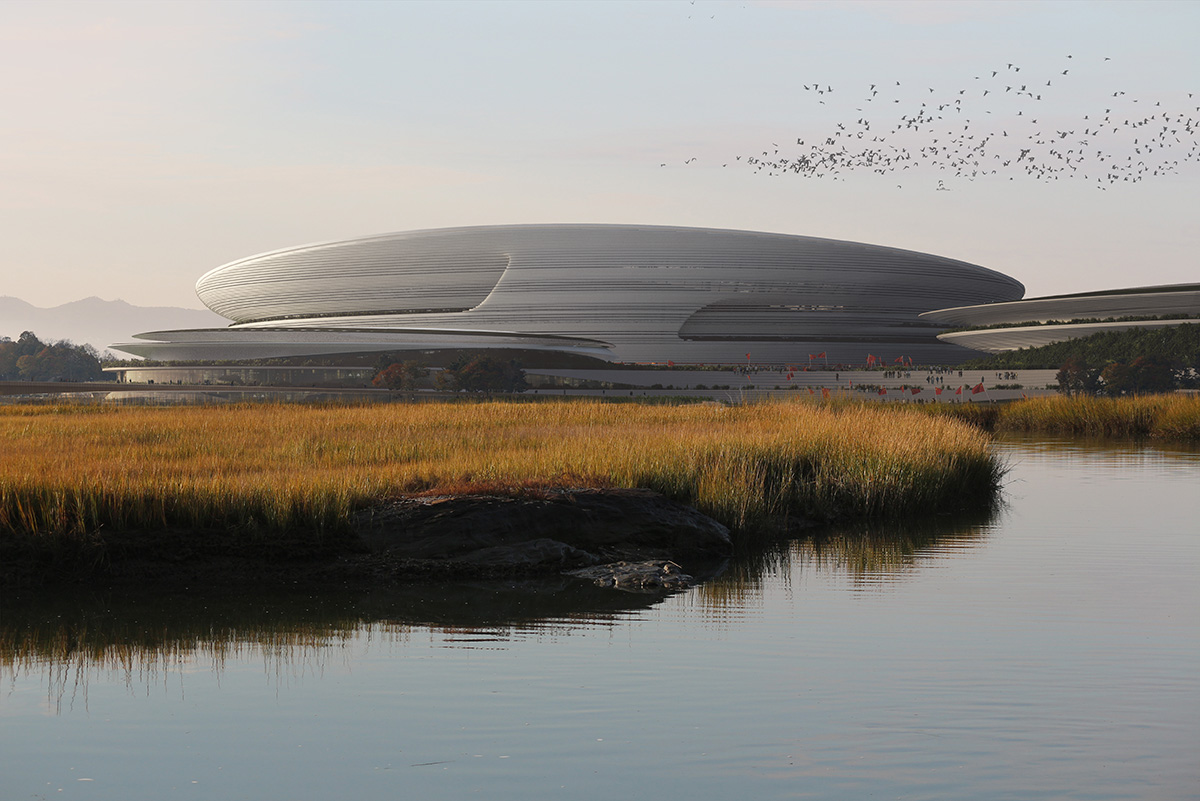
Zaha Hadid Architects' Hangzhou International Sports Centre in China. Rendering © Proloog
"Architects use real time rendering for different purposes"
Stating why architects mostly use real-time rendering, Langeveld said that "we think architects use real time rendering for different purposes. Mainly to see the impact of their design decisions on typical eye level views and how their design will affect the context."
"We use real-time rendering mainly for fine-tuning compositions and for testing light. Most of the time we are searching for compositions without really rendering anything," he added.
Langeveld explained that they looked at designs in a way that focuses on "compositions and initial moments", which could be stronger elements that define the style of Proloog.
"We have heard from others we have a certain style. We actually don't really know what it is. When a project starts we carefully listen or read to the clients explanation behind their design decisions," he said.
"Based on that we will walk with a camera through the 3d model, trying to capture those moments that communicate those decisions in the best way." "As explained before we look for beautiful compositions/moments at first and than we will test all types of light," he added.
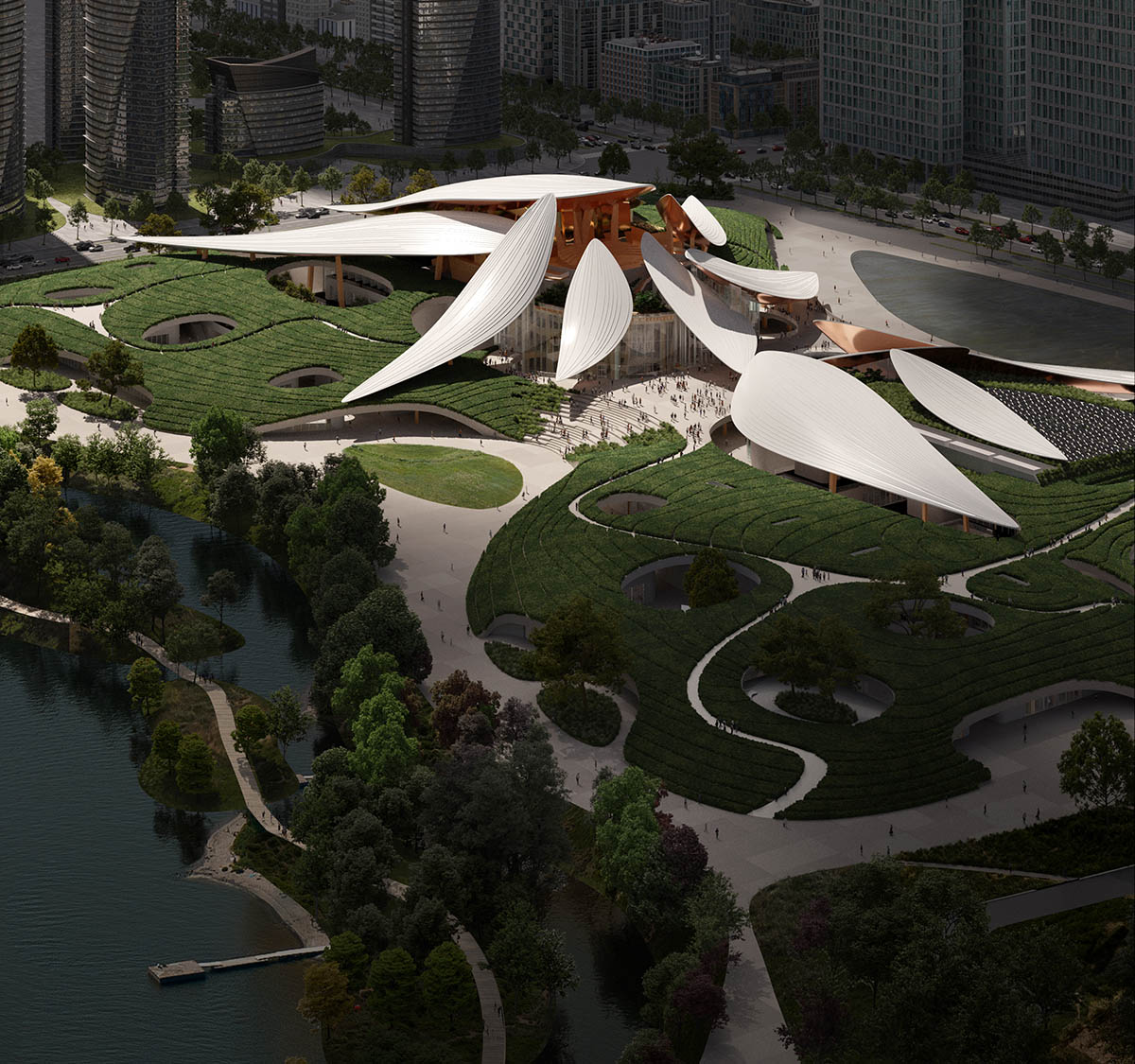
MAD's Anji Culture and Art Center in Anji, China. Rendering © Proloog
"AI still takes a human brain to find the nicest, most surprising, most unique moments of a design"
Langeveld, who thinks that AI will be a fast tool for creating visuals, underlines that the human brain is still needed to find "the nicest, most surprising, most unique moments of a design."
"Either finding them by doing what we do now, or finding them through prompting. But the last option is kinda boring," he said.
According to the artist, visualization experts will not replace architects in the future. He said that "we know some stuff about good images, nice light and strong compositions. But we don't know anything about how to build a building."
"We can, however, advice on 'cosmetics' like the rhythm of a facade or colors, for example. But nothing is more than that," he concluded.
Proloog was founded in 2012 by Joel Langeveld and Jeroen Prins in Amsterdam. The firm specialized in 3D visualization, 3D animation artist impression, 360° panorama images, photo montage, and 3D omgeving.
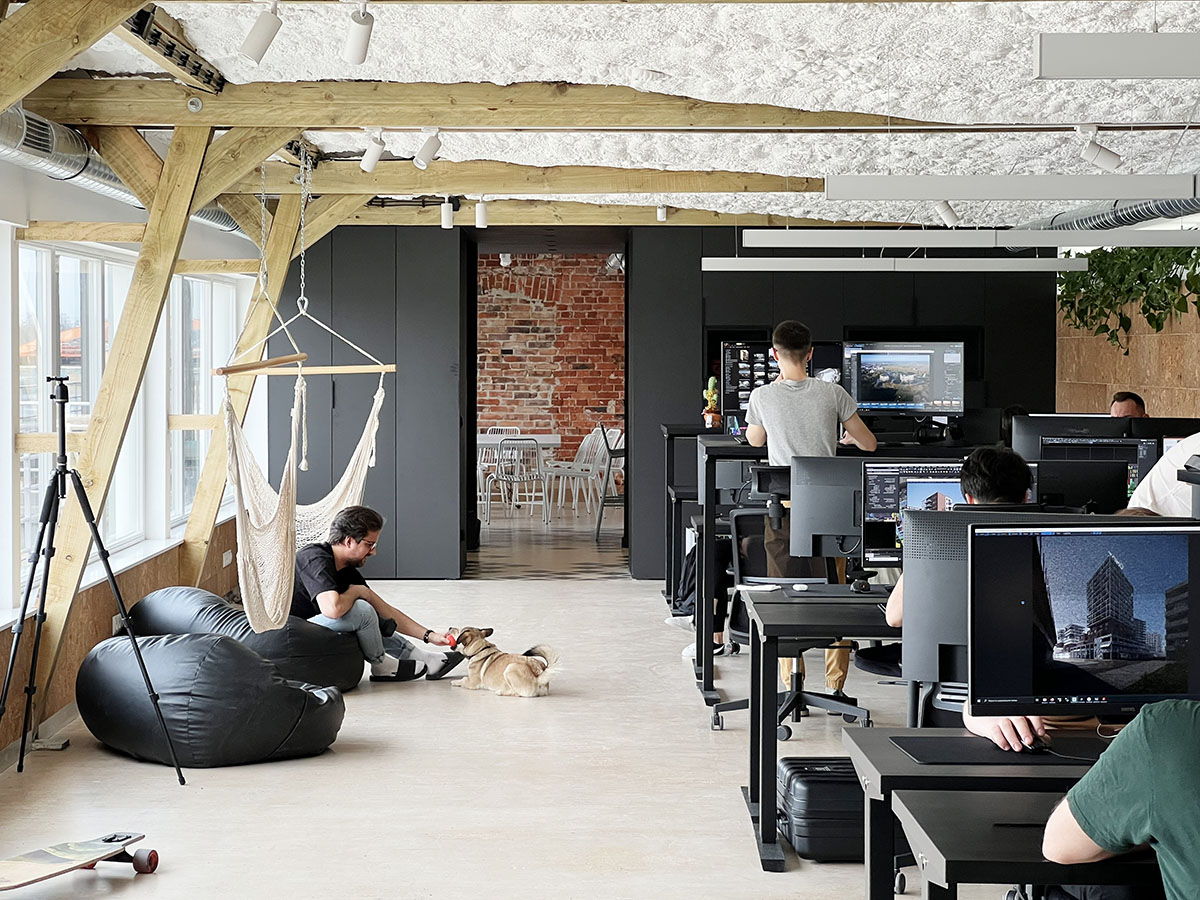
Vivid Vision Office. Image courtesy of Vivid Vision
"We strive to excel and emotionally driven, atmospheric and storytelling images"
Kacper Mroczek, Vivid Vision
Polish visualization studio Vivid Vision co-founder and director and Kacper Mroczek believes that "visualizations are one of the important tools for communication in design."
Additionally, Mroczek states that visualizations are required to present the project to the client, city authorities, potential client or the wider public and are prepared in a different language according to each segment.
"Along the architecture drawings, diagrams, visualizations attempt to bring to project to life, therefore it’s a tool capable of the biggest emotional impact."
"We believe the CGIs still play the crucial role in winning architecture competitions or selling property," he added.
Stating that real-time rendering is just like the operation of a computer game and offers the opportunity to explore the design in real time, Mroczek underlines that real-time rendering elevates the design to the next level.
"Real-time rendering provides the ability to explore the design in real time, similarly to how a computer game works. Potentially this allows reaching the next level of immersion, especially when combined with VR technologies," Mroczek explained.
"At the moment it’s widely used by architects, because it allows them to relatively easy create visualizations or animations of a good-enough quality, that can be rendered fast."
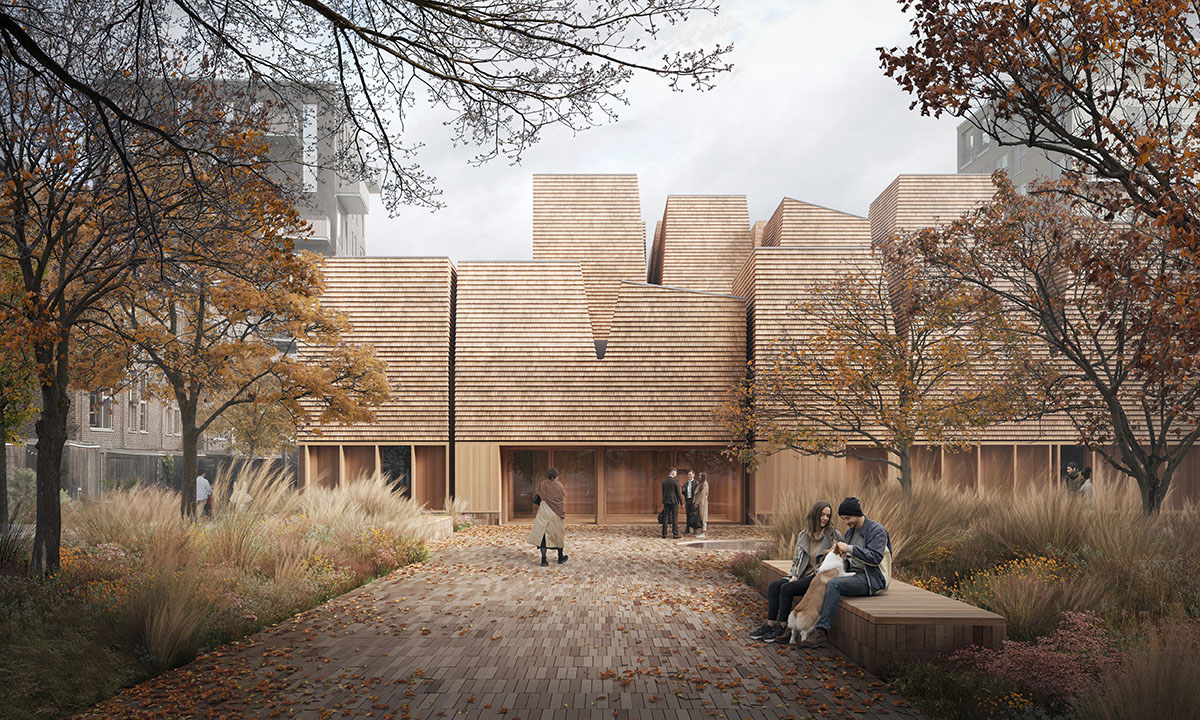
Henning Larsen's new church in Copenhagen. Rendering © Vivid Vision
What makes Vivid Vision different is that the architectural visualization studio tries to create "emotionally driven, atmospheric and storytelling visuals".
According to the studio, their clients expect to see "the story and life in the images more than actual architecture", and this enhances the capabilities and vision of the studio in creating striking visuals.
"We strive to excel and emotionally driven, atmospheric and storytelling images. Our clients often focus on the story and life in the images more than actual architecture, which creates an amazing opportunity for creative work," Mroczek explained.
"We also love working with greenery in the images and our clients often come to us with landscape or architecture designs where greenery plays a significant role."
"We often pay more attention to the atmosphere and originality, than realism or accuracy," he added.
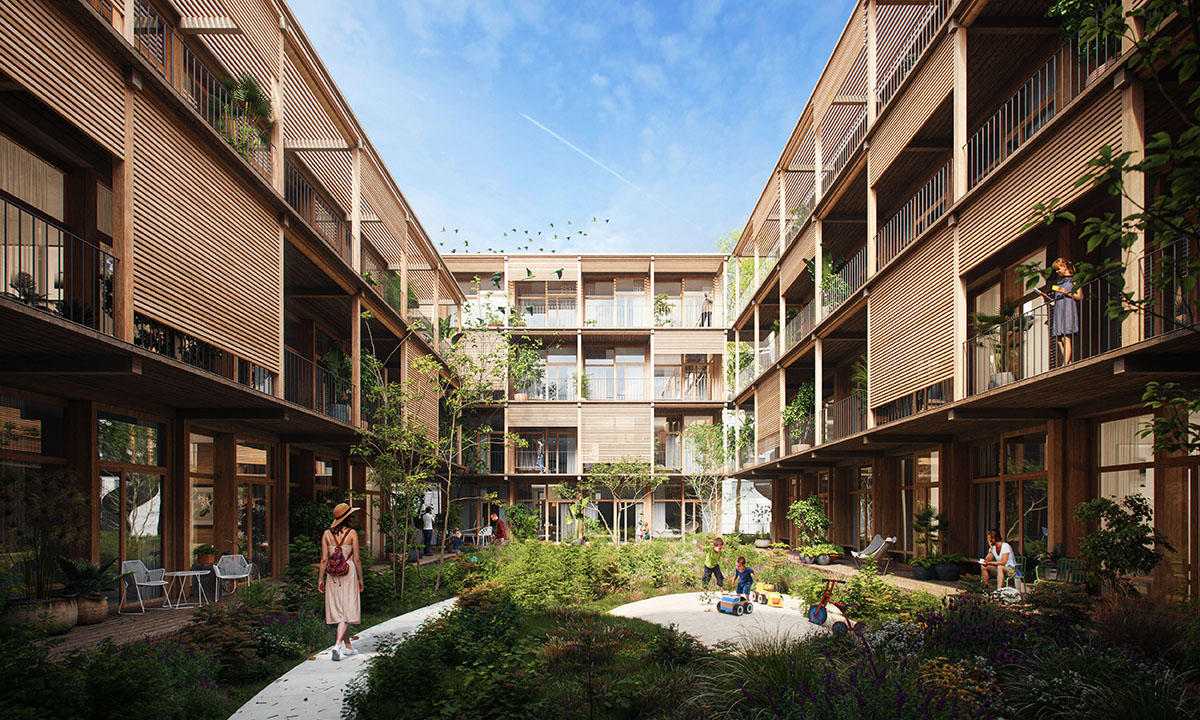
Keizer Koopmans' housing project in Madrid. Rendering © Vivid Vision
"AI is already impacting the industry in many ways"
Kacper Mroczek agreed with others, saying "AI is already impacting the industry in many ways and this impact will definitely increase exponentially." He said that "the tools available now can either help increase the quality or significantly speed up the work."
"For some people it may come as a threat, wiping them off the market, but the others will use AI as a tool to improve their services and benefit from it. Obviously we want to be on the second group so we try to stay up to date with the latest tools," he continued.
Regarding the last question, he believes that 3D visualization experts will not replace architects in the future and adds: "our team consists of architects, so I guess we are already capable of architecture design and we are often asked by our clients to aid them with some design aspects."
"Of course, the construction and engineering side of the project reaches far beyond the mere visual presentation, therefore I don’t see a way how 3D Artists could entirely replace the architects," Mroczek concluded.
Wrocław-based Vivid Vision architectural visualization company was founded by Kacper Mroczek and Tomasz Michalski in 2017. The studio offers services in 3D rendering, animation and virtual tours.
This article has been published as part of the WAC Innovative Minds: Architectural Visualization series. Our next write-up will feature interview series from different architecture-focused industry leaders.
We invite you to join our interview series to discuss the future of architectural visualization together. Contact us to take part in these series: [email protected].
Top image in the article © WAC.
3D rendering AI architectural visualization metaverse real time rendering rendering WAC Innovative Minds: Architectural Visualization
